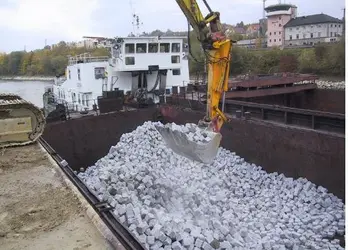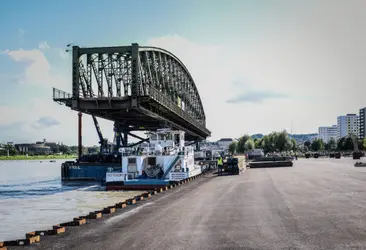The building and construction industry is one of the most promising economic sectors for transports on the Danube. Especially transports of mineral raw materials, manufactured products and semi-finished products, building materials as well as construction machines and cranes show a high potential for a modal shift to inland waterways.
Nevertheless, there is still unused potential for inland waterway cargo transports due to the high trading volumes. For example, 1 million tons of cement per year was imported on average to Austria in the years 2010 – 2014, further 320,000 tons were exported.
Products made of stones (paving stones, natural stones, bricks) as well as iron or steel products are also among the promising goods. The transport of these goods is carried out as bulk cargo, in big bags or on pallets, which are loaded onto the cargo vessel.
Several infrastructure projects are planned or realized along the Danube in the next years, such as bridge and road construction projects in Slovakia, Hungary, Serbia and Romania. Other undertakings along the Middle and Lower Danube, which are also relevant for inland waterway transport of building materials, are railway construction projects and port infrastructure projects.
The initiative aims to exploit the potential of inland waterway transports of building materials along the Danube. With its environmentally friendly bulk freight capacity and its low transport costs, the inland vessel represents a suitable transport solution for the building and construction sector.
The initiative "Building Materials on Inland Waterways" is implemented in close cooperation with the building and construction industry as well as with the Danube logistics sector: cargo owners, shipping companies, freight forwarders and port representatives will jointly discuss the use of the cost-effective transport mode in workshops and develop specific transport solutions. A total of four workshops are planned (two per year in 2017 and 2018). A final publication will summarize the results and the findings of the initiative.


